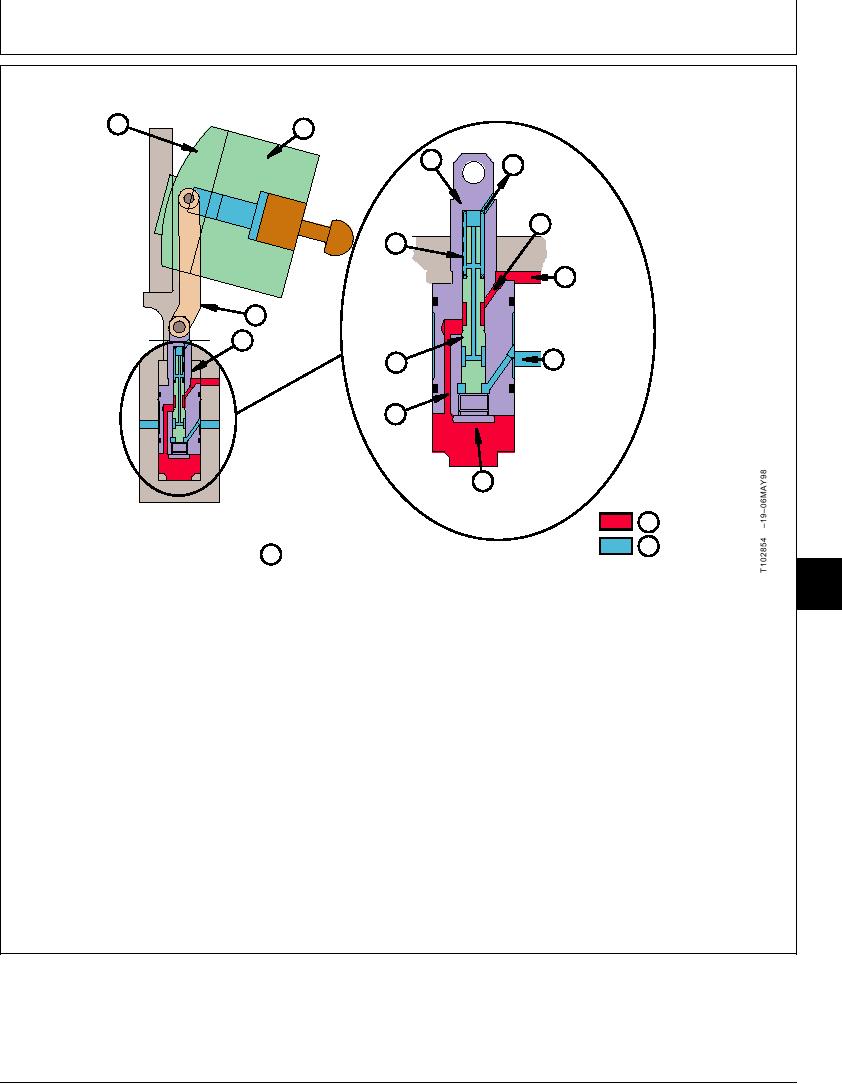
TM 5-3805-281-24-1
Theory of Operation
PROPEL MOTOR SLOW SPEED OPERATION
VALVE A
B ROTARY
PLATE
GROUP
D
H
TO MOTOR
SERVO
CASE DRAIN
PISTON
I
CHAMBER
G
"A"
SPRING
J
FROM
MOTOR
C LINK
PORT
D SERVO
PISTON
K
F
FROM PROPEL
SPOOL
SPEED CHANGE
SOLENOID
E
VALVE
ORIFICE
L
CHAMBER "B"
M SUPPLY OIL
N RETURN OIL
T102854
O SLOW SPEED
9025
05
87
group. For circuit operation, see Propel Motor Speed
The servo piston (D) is connected by a link (C) to the
Change Circuit Operation in this group.)
valve plate (A). When servo piston is extended or
retracted by supply oil pressure the angle of the rotary
Supply oil from motor port (J) is now applied to both
group (B) changes and the propel speed changes
chamber "A" (I) and chamber "B" (L) at the same time.
accordingly.
Supply oil pressure in chamber "B" acts on a larger
area than the supply oil pressure in chamber "A"
When propel speed switch is set to slow speed (turtle)
causing the servo piston to move upward increasing
the control signal from the propel speed change
rotary group swash angle. As the swash angle
solenoid valve to the bottom of speed selector valve
increases, the stroke of each piston is increased
spool (F) is too low to shift the spool against the spring
resulting in slower revolution of the propel motor for
(G). The spool (F) is pushed down by the spring (G).
slower propel speed.
(For operation of propel speed change solenoid valve,
see Proportional Solenoid Valve Operation in this
CED,TX08227,3099
1922APR981/1

